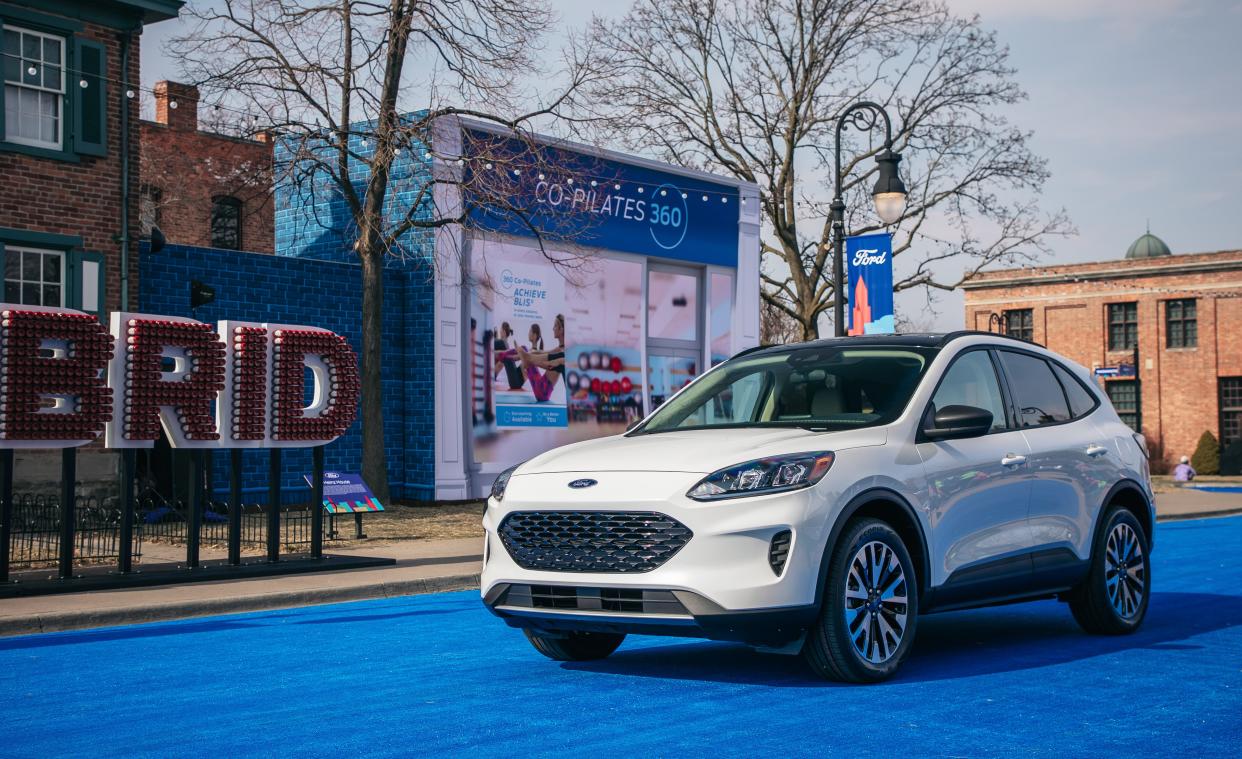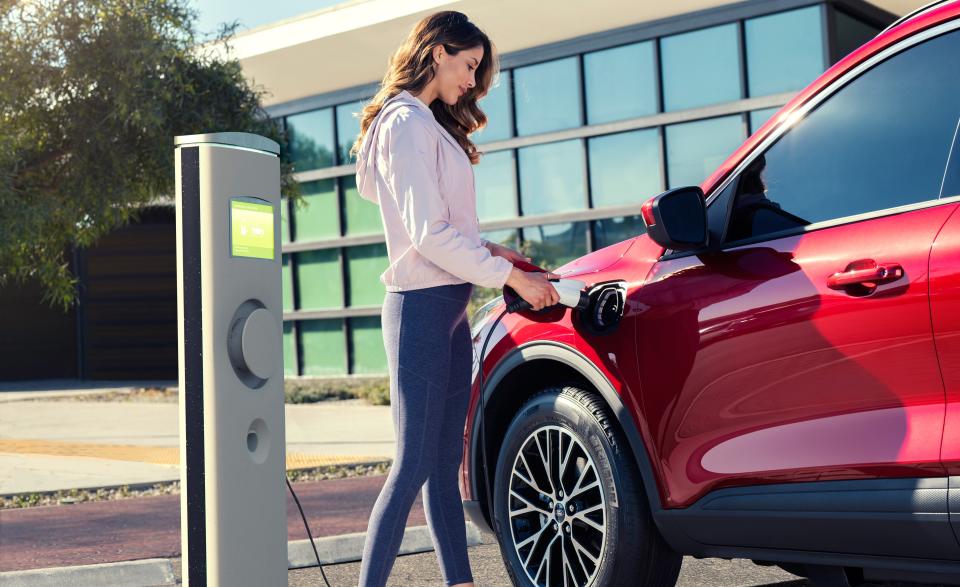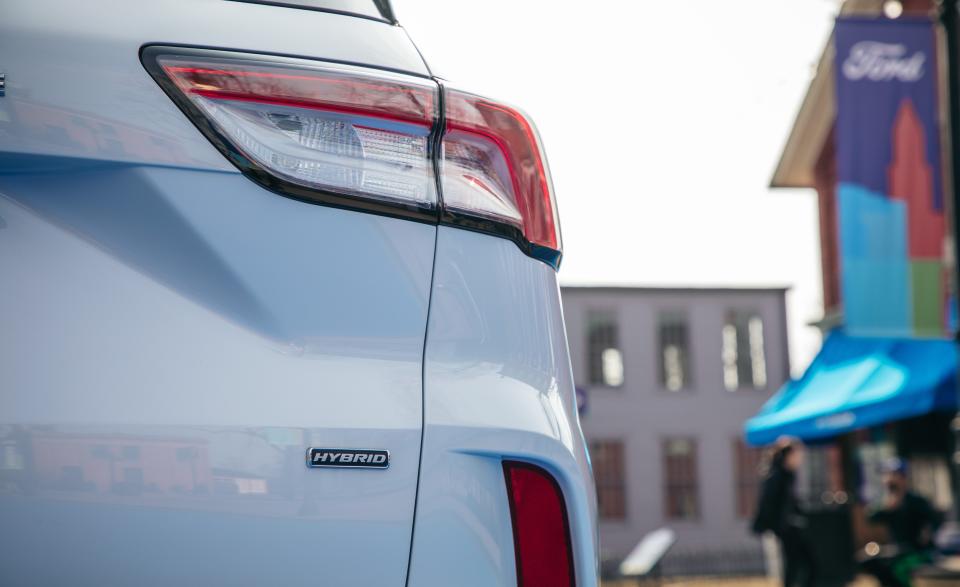2020 Ford Escape Revives the Hybrid and Adds a Plug-In Variant

The new 2020 Ford Escape offers a hybrid powertrain for the first time since the crossover's second generation ended in 2012.
There is also a new plug-in-hybrid version of the Escape that claims 30 miles of all-electric driving range.
The Escape hybrid goes on sale in fall 2019, while the Escape plug-in hybrid arrives in spring 2020.
Ford pioneered the idea of the gasoline-electric crossover with its first- and second-generation Escape hybrids, and now the Escape hybrid is making its return for the new 2020 model, the fourth generation of the popular compact SUV. In addition to a traditional hybrid model, there will also be an Escape plug-in hybrid with a bigger battery pack offering a claimed 30 miles of all-electric driving range.
Both hybrids use a 2.5-liter gasoline inline-four that runs on the more efficient Atkinson cycle, along with two electric motors and a planetary gearset that combines the two power sources and allows for gear-ratio changes, essentially operating as a continuously variable automatic transmission. The standard hybrid's battery pack sits at 1.1 kilowatt-hours, while the plug-in hybrid's is significantly larger, at 14.4 kWh; both are lithium-ion packs that fit under the floor. Combined horsepower for the standard hybrid is 198 horsepower, while the plug-in sits at 209 combined horsepower, fitting between the Escape's standard gas powertrains, a 180-hp turbocharged 1.5-liter three-cylinder and a 250-hp turbocharged 2.0-liter four-cylinder. The standard hybrid is around 250 pounds heavier than the version with the 1.5-liter engine, meaning its acceleration performance is likely to be similar, while the plug-in hybrid is 585 pounds heavier.

The plug-in hybrid is only available with front-wheel drive. If you want all-wheel drive, opt for the standard hybrid model, which offers it as an option. Rather than some competitors' all-wheel-drive hybrids that use a separate electric motor to power the rear wheels, the AWD Escape hybrid uses a traditional mechanical prop shaft to send power to the rear wheels.
MPG Expectations
Ford isn't yet providing fuel-economy estimates for either hybrid model, but based on the company's claim that the front-wheel-drive standard hybrid will have a range of 550 miles and has a 14.2-gallon fuel tank, we can expect it to get around 38 mpg. That would put it close to rivals such as the Toyota RAV4 hybrid, which gets 40 mpg combined, and ahead of the Nissan Rogue hybrid, which gets 33–34 mpg combined.
The plug-in Escape has four driving modes:
Auto EV automatically decides which power source to use.
EV Now shuts off the engine and puts the car in all-electric mode.
EV Later runs the gas engine to save the battery's charge for electric driving later.
EV Charge runs the gas engine to charge a depleted battery.
Like other plug-in hybrids, the Escape PHEV will have two separate EPA ratings. Its MPGe rating will include both all-electric and hybrid driving, while a separate combined rating for hybrid mode will estimate its fuel efficiency when the gasoline engine is running. None of these EPA numbers are available yet.

Differences between the Hybrid and the Nonhybrid
Opting for the hybrid model necessitates a few compromises to interior space because the floor is slightly higher to accommodate the battery pack. Rear-seat legroom is reduced by 1.7 inch, while cargo space behind the rear seat is down by 2.8 cubic feet, to 30.7 cu ft.
There aren't any other significant differentiating factors between the nonhybrid and hybrid models other than badging. The Escape hybrid will be available in SE Sport and Titanium trim levels, while the plug-in hybrid will offer SE, SEL, and Titanium trims.
We expect a price premium of around $1000 to $2000 for the Escape hybrid over comparable Escape models with the 1.5-liter gasoline engine, meaning it should start around $27,000 or $28,000 when it hits dealerships this fall. The plug-in-hybrid model will likely cost considerably more, possibly starting near $30,000, when it arrives next year.
You Might Also Like

